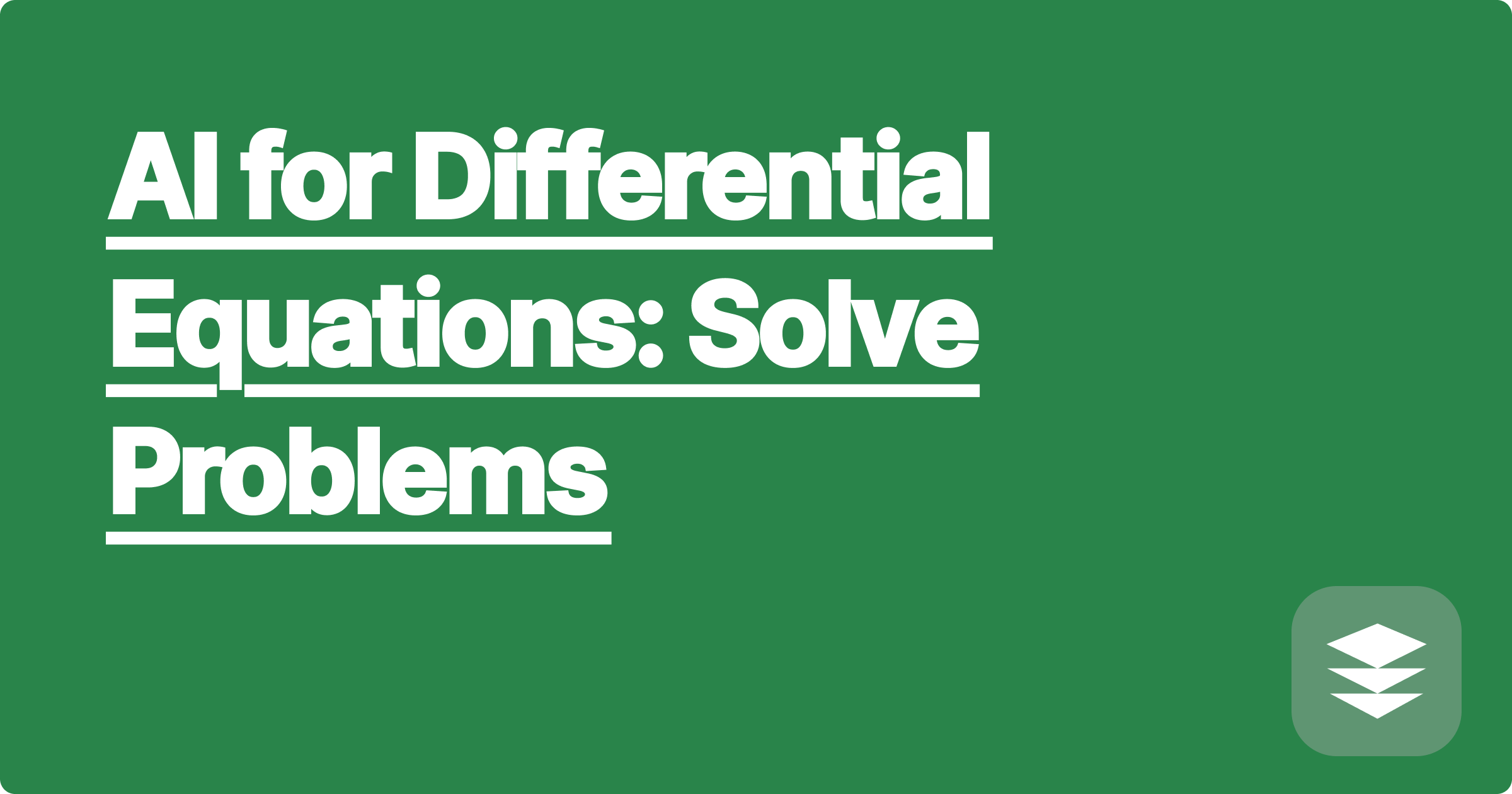
The world of STEM is built on the foundation of differential equations. These equations describe everything from the motion of planets to the growth of populations, and mastering them is crucial for any aspiring scientist or engineer. However, grappling with complex differential equations can often feel like navigating a dense forest without a map. Many students find themselves overwhelmed by the intricate calculations, diverse solution methods, and the sheer volume of practice required to truly grasp the concepts. This is where the power of Artificial Intelligence comes in, offering a guiding light through the challenging terrain of differential equations.
For today's STEM students and researchers, AI isn't just a futuristic concept; it's a powerful toolkit that can transform the way we learn and work. It's about having a personalized tutor available 24/7, capable of providing tailored explanations, generating practice problems, and even helping to analyze complex datasets. This blog post will explore how AI, particularly lesser-known tools and strategies involving a Generalized Personal AI Partner (GPAI), can empower you to conquer differential equations and excel in your STEM journey. We’ll delve into practical examples, share effective strategies, and reveal how you can leverage these tools to not just solve problems, but also to deepen your understanding and boost your academic performance.
Differential equations describe the relationship between a function and its derivatives. They are fundamental to understanding how systems change over time and are used to model phenomena across various scientific disciplines. A common challenge students face is identifying the type of differential equation they're dealing with (e.g., first-order, second-order, linear, non-linear, homogeneous, non-homogeneous). Each type requires a specific solution method, and choosing the wrong approach can lead to hours of wasted effort. Furthermore, even after identifying the correct method, the actual calculations can be tedious and error-prone, involving complex integrations, substitutions, and algebraic manipulations. Finally, visualizing the solutions and understanding their physical significance can be difficult, especially for higher-order equations or systems of equations.
Fortunately, AI offers a suite of tools to tackle these challenges. Beyond familiar names like ChatGPT and Wolfram Alpha, several specialized AI platforms can significantly streamline the process of solving differential equations. For instance, SymPy, a Python library, allows for symbolic computation and can solve a wide range of differential equations analytically. Another powerful tool is DifferentialEquations.jl, a Julia package designed specifically for numerical solutions of differential equations. This package excels at handling complex systems and provides various sophisticated algorithms for accurate and efficient solutions. Integrating these tools with a GPAI can further enhance your learning experience.
Imagine you're faced with a second-order linear differential equation. Instead of flipping through textbooks or searching online tutorials, you can simply input the equation into your GPAI. Your GPAI, leveraging tools like SymPy, can instantly classify the equation and suggest appropriate solution methods. It can then walk you through each step of the solution process, providing detailed explanations and highlighting potential pitfalls. If a numerical solution is required, your GPAI can utilize DifferentialEquations.jl to generate accurate results and even visualize the solution curves. Moreover, your GPAI can create personalized practice problems based on your current understanding, allowing you to solidify your knowledge and build confidence.
Consider the equation y'' + 2y' + y = e^(-x). Using SymPy within your GPAI environment, you can input the equation and receive not only the general solution, y(x) = (c1 + c2x)e^(-x) + (x^2/2)e^(-x)*, but also a step-by-step derivation explaining the method of undetermined coefficients used to find the particular solution. For a more complex example involving a system of non-linear differential equations, DifferentialEquations.jl, guided by your GPAI, can provide numerical solutions and generate interactive plots illustrating the system's behavior over time. These visualizations can be invaluable for understanding the dynamics of complex systems, such as predator-prey interactions or chemical reactions.
Integrating AI into your workflow goes beyond simply solving equations. A well-defined GPAI can become your personalized learning companion. It can help you manage your study schedule, prioritize tasks, and even curate relevant research papers based on your current projects. Imagine having your GPAI analyze your past performance on quizzes and exams, identifying areas where you need more practice. It can then generate tailored practice problems focusing on those specific weaknesses, maximizing your study efficiency. By combining the power of AI tools with a strategic approach to learning, you can significantly improve your understanding, boost your grades, and free up valuable time for other pursuits.
To get started with your own GPAI, explore platforms like Wolfram Alpha Pro and integrate specialized tools like SymPy and DifferentialEquations.jl. Experiment with different workflows and discover what works best for your learning style. Remember, AI is a powerful tool, but it's most effective when combined with your own curiosity and dedication. By embracing these AI-powered solutions, you can transform your approach to differential equations and unlock your full potential in the exciting world of STEM. Don’t just solve problems, understand them, and watch your academic performance soar.
AI for Differential Equations: Solve Problems
AI for Earth Science: Explore Data
AI for Aerospace Eng: Flight Sim
AI for Physics Labs: Data Analysis
AI for Genetics: Understand DNA
AI for Electrical Eng: Circuit Design
AI for Biochemistry: Enzyme Kinetics
AI for Math: Conquer Complex Problems